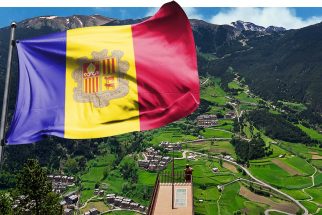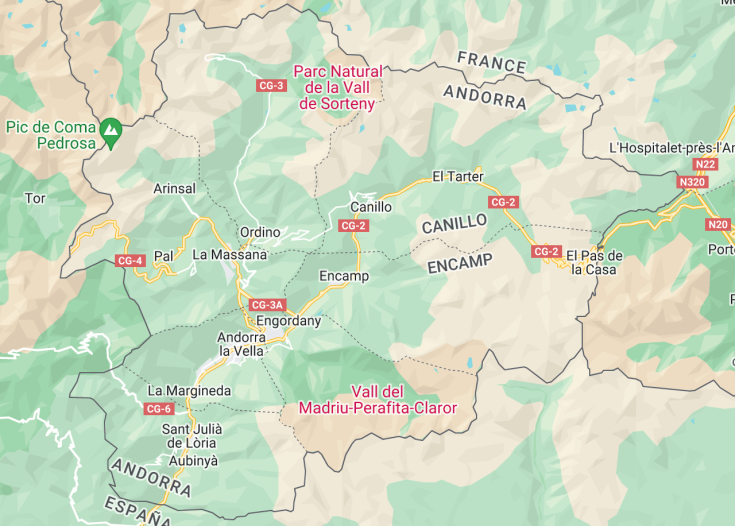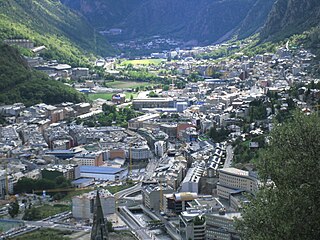Nestled in the heart of the Pyrenees Mountains, Andorra is a sovereign microstate offering visitors a unique blend of scenic beauty, rich history, and cosmopolitan luxury. Despite its diminutive size, this hidden gem is replete with breathtaking landscapes, upscale shopping, and vibrant cultural experiences.
When visiting Andorra, ensure you have both winter and summer attire. The country offers skiing in winter and hiking in summer, allowing for diverse experiences.
Consider sampling traditional Andorran cuisine. Dishes like ‘trinxat’ showcase the nation’s culinary heritage and offer a delightful treat for the palate.
Top destinations in Andorra
Andorra: A Picturesque Alpine Destination
| Capital | Andorra la Vella |
| Time in Andorra | GMT+1 |
| Language spoken | Catalan |
| Population | 77,543 (source: World Bank, 2021) |
| Religion | Roman Catholic (90%) Other religions (10%) |
| Currency | Euro(€, EUR) |
| Airports | Andorra–La Seu d’Urgell Airport |
Andorra, a pristine microstate nestled in the Eastern Pyrenees mountains, has a rich tapestry of history and culture that belies its diminutive size. As one of the world’s smallest nations, its sovereignty dates back over a millennium, making it one of the oldest countries in the world. Historically, Andorra’s existence can be traced back to Charlemagne, who allegedly granted the territory its independence as a reward for assistance against the Moors. Over the centuries, the landlocked enclave has successfully maintained its autonomy through various European power struggles, including a unique dual principality governance shared between the French head of state and the Bishop of Urgell, Spain. Despite its limited geographical expanse, Andorra is renowned for its robust economy, anchored by tourism and banking. Its preserved medieval architecture, combined with the timeless charm of its mountainous terrains, tells the tales of its fascinating past and its continued allure in the modern age.
Where is Andorra located?
Andorra is a landlocked microstate situated between France and Spain in the Eastern Pyrenees mountains. Its rugged terrain and central European location make it a picturesque destination.
What is Andorra famous for?
Andorra is renowned for its ski resorts, tax-free shopping, and historic churches. Its vibrant culture, coupled with the scenic beauty of the Pyrenees, attracts tourists from around the world.
History
The history of Andorra dates back to the foundation of the city and stretches into the present day. The small principality, nestled in the Pyrenees Mountains between France and Spain, has a rich and unique history that has shaped its identity. Throughout the centuries, Andorra has been influenced by both its neighboring countries and its own internal developments, resulting in a fascinating blend of cultures and traditions.
8th – 15th century
Andorra’s early history is shrouded in mystery, with little documented evidence of its foundation. According to legend, Andorra was founded in the 8th century by Charlemagne, who granted the territory to the counts of Urgell and the bishops of Urgell. These two feudal lords jointly ruled Andorra for centuries, with the principality becoming a rare case of co-sovereignty.
During the Middle Ages, Andorra faced numerous challenges, including territorial disputes between neighboring lords and the threat of invasions. Various treaties were signed to clarify the territorial boundaries and ensure the stability of the principality. In 1278, a treaty known as the Paréage was signed between the Bishop of Urgell and the Count of Foix, further solidifying the co-sovereignty of Andorra.
16th – 18th century
In the 16th century, Andorra was caught in the midst of larger conflicts between France and Spain. The principality was often used as a buffer zone and was subject to the influence of both powers. In 1607, the French and Spanish co-princes agreed to a peace treaty that established Andorra’s neutrality and guaranteed its independence.
During the 18th century, Andorra experienced a period of relative stability and prosperity. The principality benefited from its strategic location along the trade routes between France and Spain, which brought economic opportunities. Andorra’s economy relied mainly on agriculture, livestock, and trade with its neighboring countries.
19th – 20th century
Andorra underwent significant changes during the 19th century as industrialization swept across Europe. The principality saw the rise of mining and metallurgical industries, particularly iron ore mining. This brought about social and economic transformations, but also led to population decline as many Andorrans sought better opportunities elsewhere.
In the early 20th century, Andorra’s political structure was modernized. In 1919, the first Consell General (General Council) was elected, marking a shift towards a more democratic system of governance. Andorra continued to promote its tourism industry, attracting visitors with its picturesque landscapes and ski resorts.
21st century
In recent years, Andorra has focused on diversifying its economy and reducing its dependence on tourism. The principality has embraced new technologies and sectors such as finance and high-end trade. Andorra has also become increasingly connected to the international community, seeking to establish itself as a global player while preserving its traditions and culture.
Visit Andorra
What to see and do in Andorra
When visiting Andorra, there are a variety of attractions and activities to enjoy. Here are some recommendations:
- Explore the historic town of Andorra la Vella, the capital of the principality. Discover its charming old quarter, where you can admire medieval architecture and visit the Casa de la Vall, a historic house that served as the seat of government.
- Visit the Romanesque churches scattered throughout the principality. These architectural gems provide a glimpse into Andorra’s past and feature beautiful frescoes and carvings.
- Discover the stunning natural landscapes of Andorra by hiking or biking. The principality offers numerous trails that take you through valleys, mountains, and picturesque villages.
- Enjoy the ski resorts in winter, where you can indulge in various winter sports such as skiing, snowboarding, and snowshoeing.
- Experience the thermal spas that Andorra is known for. Relax and rejuvenate in the warm waters while surrounded by breathtaking mountain views.
Events in Andorra
Andorra hosts various events throughout the year, offering a glimpse into its rich culture and traditions. The principality celebrates both religious and cultural festivals, with some of the notable events including:
- Andorra National Day (September 8th): This is the country’s national day and is marked by various festivities, including parades, music performances, and traditional dances.
- Andorra la Vella Jazz Festival (July-August): The jazz festival attracts renowned jazz musicians from around the world. Concerts and performances are held in various venues across the capital.
- Andorra Shopping Festival (October): This event offers discounts and promotions on a wide range of products, attracting shoppers from both within and outside the country.
- Winter sports competitions (December-March): Andorra is a popular destination for winter sports enthusiasts. The principality hosts various international competitions, including skiing and snowboarding events.
These events showcase the vibrant and lively spirit of Andorra, providing visitors with a unique cultural experience.
Best time to visit Andorra
The best time to visit Andorra largely depends on your preferences and the activities you plan to engage in. If you are a skiing or snowboarding enthusiast, the winter months from December to March offer excellent conditions and access to the ski resorts. The slopes are well-maintained, and the picturesque landscapes covered in snow create a breathtaking backdrop.
For those interested in outdoor activities such as hiking and biking, the months of May to September are ideal. During this period, the weather is generally pleasant, and the mountains and valleys are adorned with beautiful blooming flowers and lush greenery.
Andorra also has a calendar of events throughout the year, so it might be worth checking if any festivals or cultural activities align with your travel plans.
Is Andorra worth visiting?
Andorra is definitely worth visiting for those seeking a unique cultural experience and stunning natural landscapes. The principality offers a distinct blend of Spanish and French influences, resulting in a rich cultural tapestry. From exploring medieval architecture to indulging in thermal spas and enjoying outdoor activities, there is something for everyone in Andorra.
However, it’s important to note that Andorra is a small country with limited space, and it can get crowded during peak tourist seasons. The ski resorts, in particular, attract a large number of visitors, so it’s advisable to plan your trip accordingly and avoid peak times if you prefer a quieter experience.
If you are looking for bustling cities or extensive historical sites, Andorra may not be the ideal destination for you. The principality’s charm lies in its picturesque landscapes, quaint towns, and unique blend of cultures. If you appreciate natural beauty, outdoor activities, and a relaxed atmosphere, then Andorra is definitely worth a visit.
Common questions
What are the best things to do in Andorra?
Andorra offers an array of exciting activities for visitors. Some popular options include skiing and snowboarding in the winter months, exploring beautiful hiking trails in the summer, shopping for duty-free products in the capital city of Andorra la Vella, and visiting natural attractions such as Vallnord and Madriu-Perafita-Claror Valley. There are also numerous opportunities for outdoor adventure, including mountain biking, horseback riding, and enjoying the stunning landscapes.












